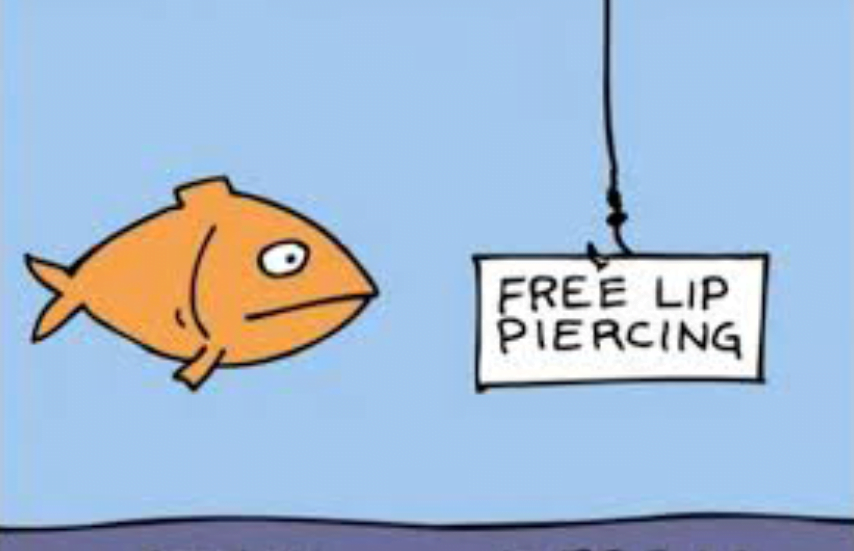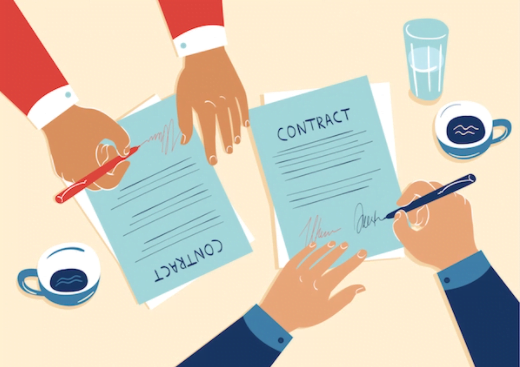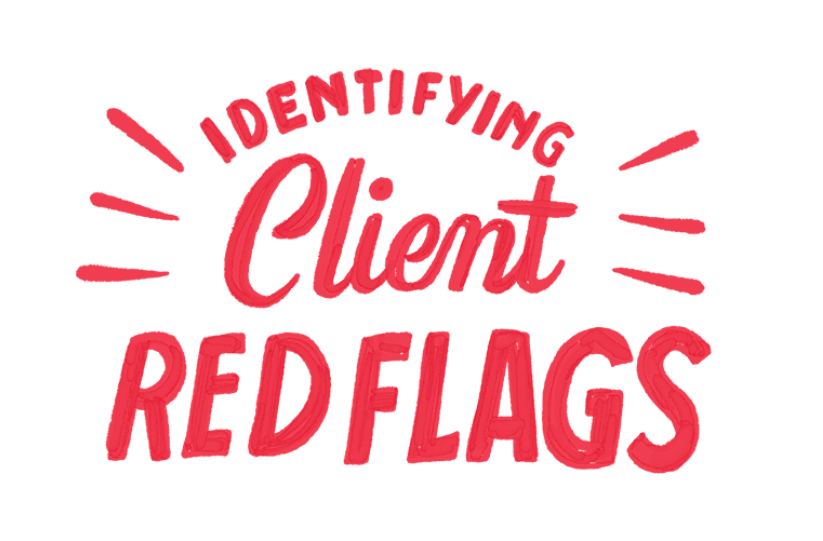Let’s say you’ve written a perfect project proposal, you went through the intense interviewing process and you got hired for the job.
As exciting as this moment is, it can sometimes also make you feel uneasy.
That’s because you sensed a few things that made you question the client and their intentions.
Red flags are something you shouldn’t ignore as a freelancer.
Paying attention to troubling signs can save you a lot of time and inconvenience in the long run.
If you’re just getting started and you don’t know what to pay attention to, here are a few signs of trouble to look out for.
An Offer That Seems Too Good to Be True
As a freelancer, you definitely want opportunities to earn more income and enjoy better financial stability.
When a super attractive offer comes along, you’ll be immediately tempted to jump on the wagon.
Traditional wisdom, however, suggests that opportunities appearing too good to be true probably are.

What exactly does that mean?
You obviously know how much a certain job is going to cost and what the averages in the respective field are.
Is a client offering you a lot more money than that?
Are they agreeing to every single condition you have?
Does the client seem in too much of a hurry, being eager to pay you a lot so that you get started immediately?
While all of these could be indicative of someone who values your professional expertise, an offer that’s unrealistically attractive is usually a red flag.
To be on the safe side, always ask for an upfront payment.
This way, you’ll get to determine if the customer is legit.
It’s also a good idea to set a couple of milestones, getting paid for the completion of each one.
Leaving the entire payment until the end of the project could lead to serious issues (every freelancer out there has had to deal with a disappearing customer and when this happens, upfront payments become the norm).
Free Trials and Free Work Samples
This is a trap that many newbie freelancers fall into.
There are clients out there who will ask for free personalized work samples in order to ‘’assess’’ a freelancer’s experience and compatibility with the task at hand.
Just think about this practice for a minute.
A client who asks 10 freelancers for free work in order to test them could practically have an entire project completed without paying a single cent.
You should never agree to doing work free of charge.
If a client wants to test you out, they can pay for a micro project.
Otherwise, your portfolio should be enough to provide some idea about your competence and professional experience.
Being Asked to Work Outside a Freelance Platform
Platforms like Upwork and Fiverr provide excellent job hunting opportunities.
They also give you security and the knowledge you will be getting paid in the end.
To offer such services, these platforms charge freelancers and clients certain fees.
While nobody likes losing money, the convenience is definitely worth its price in that case.
Sketchy clients will often ask freelancers to complete projects outside these platforms.
In some instances, the client would try to avoid commissions and fees which makes sense.
In other situations, however, they could be seeking opportunities to have a project completed for free and waste the freelancers time.
Doing work outside of those platforms is against the terms of use, so you might need to protect yourself there and only work outside if you trust the client.
This means that you could potentially lose your profile and access to the respective workplace.
Also, a client will find it very easy to vanish in thin air after all of the work is done.
Micromanagement Right Off the Bat
Let’s face it – dealing with difficult clients is never fun.
This is especially true for clients who like to micromanage and intervene in every single aspect of a project.
Luckily these tendencies can be spotted during the pitching and interview phase.
Some clients will be very demanding when it comes to how the job should be completed.
They will have examples, rigid guidelines and a whole strategy in place.
Often, you’ll feel like a robot who’s simply hired to put elements together – all creativity and know-how will be taken out of the equation.
A client that appears so demanding before you’ve even started working together could be a real nightmare.

Take your time to assess the pros and cons before agreeing to that project.
In some instances, even a big payday isn’t going to be enough for all of the anger and stress that went into getting the job done.
Difficult Communication and Unresponsiveness
Freelancing is a two way street.
You will have to ask for clarifications, additional information and changes on the go.
If a client doesn’t respond in a timely manner, you’ll lose a lot of time.
Also, poor communication could impact the final result of the project.
Is a client taking too long to respond to basic inquiries?
Are they providing vague information you can’t really count on to handle the task?
Communication difficulties, no matter what they stem from, are properly the biggest red flag!

“Chemistry” between a freelancer and a client is important.
You don’t have to have a similar communication style, but understanding each other and the scope is very important.
If you feel misunderstood or you’re not being provided the details that matter, you should probably seek other opportunities.
Treating You Like Their Employee
Unfortunately, there are still clients out there who don’t understand the difference between a freelancer and an employee.
Is a client demanding your availability at any given time?
Are they scheduling frequent calls for no apparent reason at all?
Do they expect you to leave everything else and handle a work request immediately, even if the respective task isn’t that urgent?
This is a client who thinks that hiring you to do a project means that all of your working hours are dedicated to their gig.
It’s very important to set boundaries right off the bat even if it’s a big client.
You should always tell the clients the expected turnaround time on their projects and deadlines, but also make it clear that you have other responsibilities.
They should also know when you take calls, availability for new projects and other important day to day stuff, but never take control of your complete schedule unless you’re being compensated for that.
As a freelancer, you are self-employed and you’re the only boss in charge of the work day.
If a client is interfering way too much, you may want to revise that relationship and think about your communication – Maybe there is something you can change or make more clear?
A Client Who Doesn’t Want to Sign a Contract
The importance of having a freelance contract is something that we’ve discussed already.
This document protects you and it also offers clients a number of safeguards.
It’s in the best interest of both parties to have such a document in place before starting on a project.
Some clients, however, will be hesitant or completely non-cooperative when it comes to signing a contract.
Contracts outline deadlines, payment terms and compensation in case either party fails meeting their responsibilities.

Some clients aren’t ‘’ok’’ with being held accountable when they’re late with a payment or when they demand additional work for no apparent reason.
If your business relationships occur outside of a freelance platform, you should definitely have a contract in place.
I would say even inside a platform like Upwork or Fiverr as the general contracts they offer aren’t suitable for all fields. Just the basics.
A client that refuses to sign a reasonable agreement isn’t a trustworthy one.
Be very careful about getting involved with these kinds of clients.
Someone Who Thinks They Understand Your Field Better Than You
This is one of the most annoying client types.
You’ve definitely come across such a customer at least once.
They’re a “self-taught” professional in the realm.
They have a very good idea about how the job should be done, correcting you and modifying the approach you plan to use.
Someone who thinks they know your field better than you do will be impossible to work with.
Such clients often have very bad ideas about what needs to happen.
If you stick to their way of doing things, chances are that the project would be sub-par.
If you ever come across such a client, make sure they know who the professional is in advance.
Outline the work you want to do and the specific steps that the project will involve.
Make your professional recommendations and if a client doesn’t want to accept those, move on.
Working with someone who wants to modify your efforts during every step of the way will be emotionally draining.
These are some of the main red flags you should notice when taking on new clients.
And here’s one final thing to understand – a red flag doesn’t necessarily mean a terrible experience.
Communicating your worries right off the bat and making adequate suggestions can help improve a client’s attitude significantly.
If your input isn’t being met favorably, you can easily move on.
Identifying red flags will become a whole lot easier with time and experience.







